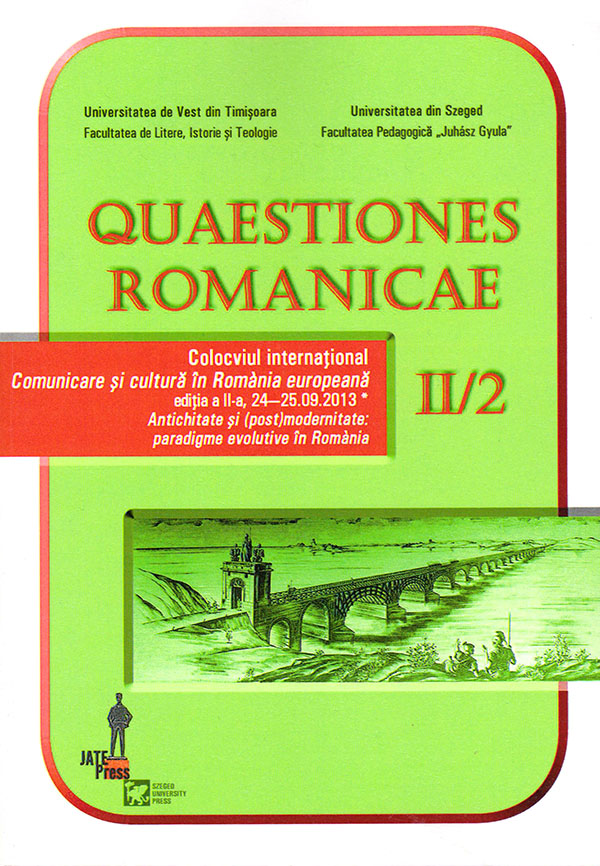Crearea şi evoluţia formelor prospective romanice. O perspectivă integrativă
Abstract: (The evolutive process of the Romance prospective forms. An integrative perspective) Seen from a diachronical perspective, the Future (the sigla V in our paper) and the Conditional (the sigla COND) of Romance languages represent classical instances, real samples in the handbooks of Romance linguistics, used to illustrate: „[…] il ciclo perenne che va dall’analisi alla sintesi” (Nocentini 2001: 367). Briefly, this evolutive process concerns the Latin verb HABERE (for French, Spanish and Italian) which first was lexeme with full lexical meaning, transitive and with a primary meaning of [+possesion], and, then, it started to be associated with a Complement Infinitive in various grammatical constructions. It increasingly lost its primary meaning, its form and its morpho-syntactic function being also reduced. Thus, HABERE was grammmaticalized and became morpheme for Future, and by association for the Conditional. This reconstruction theory of the Romance paradigms, the Future and the Conditional, is based on empirical data concerning the linguistic evolution and typology, data taken from the Latin texts beginning with the last part of Republic era, up to the VIII th century A.D. In our paper, we intend to make a synthesis of the main moments in the evolution and grammaticalization of the Romance Future and Conditional forms, starting from the primary Latin structures and continuing with their forms in the Romance verbal systems.
Keywords: the Future, the Conditional, the Latin language, Romance languages (French, Spanish, Italian), grammaticalization.
Rezumat: Privite din perspectivă diacronică, viitorul (siglat în text: V) şi condiţionalul (siglat în text: COND) reprezintă exemple clasice, veritabile eşantioane în manualele de lingvistică (romanică) cu care se ilustrează „[…] il ciclo perenne che va dall’analisi alla sintesi” (Nocentini 2001: 367). În rezumat, acest proces evolutiv vizează verbul latin HABERE (pentru franceză, spaniolă şi italiană) care din lexem plin, tranzitiv din punct de vedere sintactic şi cu semnificaţia primară de [+posesie] intră în diverse construcţii gramaticale, asociindu-şi un infinitiv complement şi ajunge să îşi piardă progresiv sensul originar, reducându-şi totodată corpul fonetic şi rolul morfosintactic. Altfel spus, HABERE se va gramaticaliza şi va deveni morfem în construcţia V şi, prin asociere, şi a COND. Această teorie de reconstrucţie a celor două paradigme romanice, V şi COND, se bazează pe date empirice de evoluţie şi tipologie lingvistică extrase pe baza textelor latineşti de la sfârşit de Republică şi până aprox. în sec. al VIII-lea e.n. În articolul de faţă dorim să sistematizăm principalele momente din evoluţia şi gramaticalizarea formelor de V şi de COND romanic, pornind de la structurile latineşti originare şi ajungând până la fixarea lor în cadrul sistemelor verbale romanice.
Cuvinte-cheie: viitor, condiţional, limba latină, limbi romanice (franceză, spaniolă, italiană), gramaticalizare.
